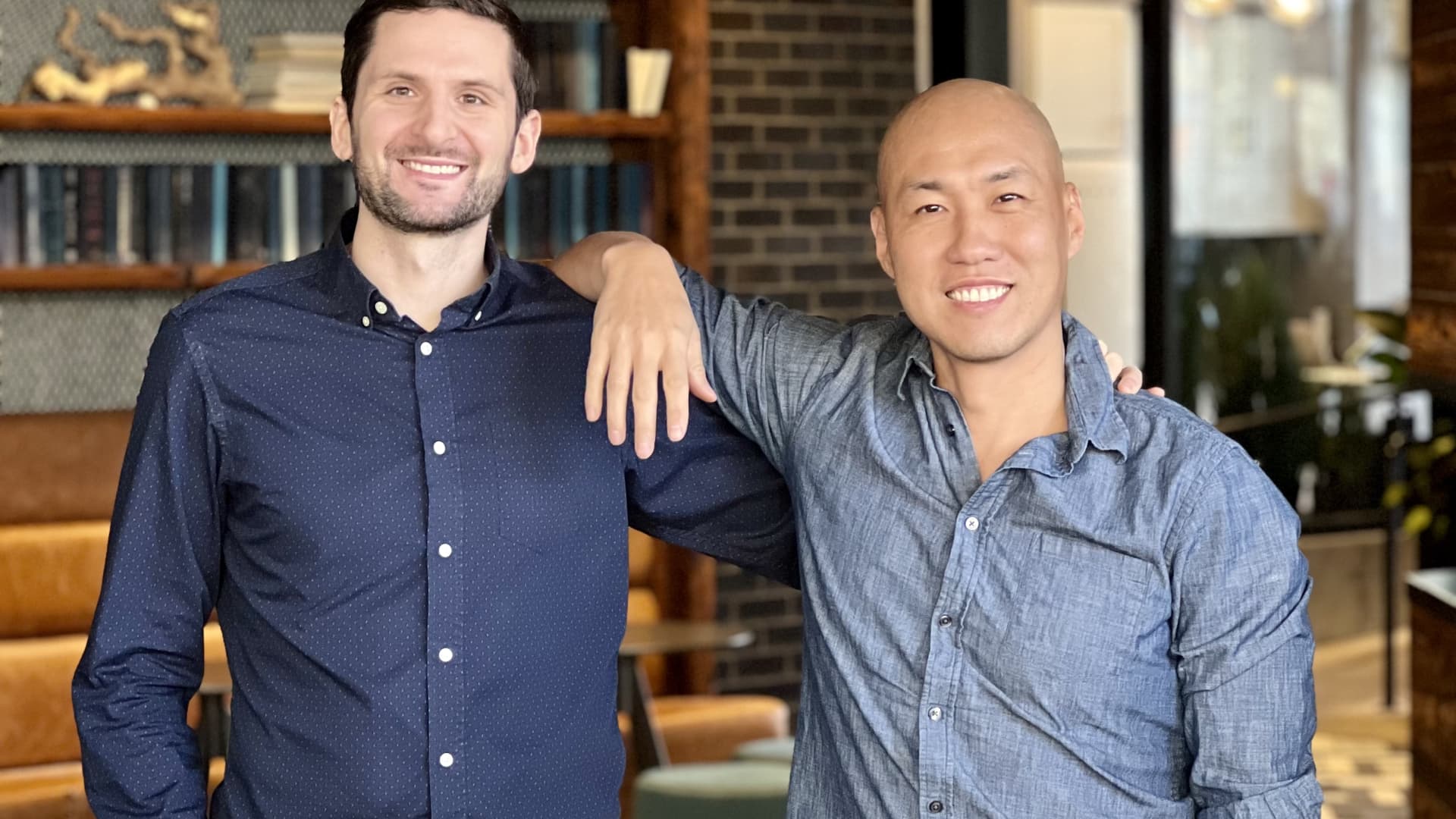The Aigen Element looks like a drafting table on rugged tires. It drives itself continuously at around two miles per hour over farmland, using an advanced computer vision system to identify crops and unwanted botanical invaders.
With two-axis robotic arms positioned close the ground, the Element can flick weeds out of the way where they’ll dry out before they can grow seeds and spread.
The robots, which are used in a fleet sized to meet the needs of a particular growing operation, work continuously for 12 to 14 hours at a time and never need to be plugged in. They are equipped with a lithium iron phosphate battery pack, as well as flexible solar panels which are lighter than the kind typically used on rooftops. They can even run in the dark for about four hours, or six hours in light to moderate rain — all without the emissions associated with diesel-powered farm equipment.
The company behind the robots, Aigen, was founded by Rich Wurden, an ex-Tesla engineer, along with former Proofpoint product lead Kenny Lee in 2020.
According to the most recent data available from the U.S. Environmental Protection Agency, U.S. pesticide usage reached more than 1.1 billion pounds annually by 2012, with herbicides accounting for nearly 60% of that. Glyphosate was the most used active ingredient that year, with 270 million to 290 million pounds used then, and it had been since 2001.
Reducing growers’ over-reliance on pesticides and heavy use of chemicals in the global food supply is of personal importance to Wurden and Lee. Both founders and several employees in their 15-person team have overcome significant health issues associated with exposure to pesticides.
Wurden, who is Aigen’s CTO, comes from a family of farmers who grew sugarbeets in Minnesota. Now, he says, his family’s farm grows sorghum and soy. prod
“My pancreas stopped producing insulin when I was 15 all of a sudden,” he said. He always suspected pesticide exposure, which is associated with a higher risk of diabetes, was a factor.
As a type 1 diabetic, he has lived with an insulin pump and environmental health on his mind every day since his diagnosis.
Before becoming an entrepreneur, Wurden worked as a mechanical engineer and on battery technology at Tesla, helping to create the battery pack that is found in the company’s best-selling Model 3 and Y vehicles and Model S flagship sedan. He later joined an electric boating startup called Pure Watercraft in Seattle, where he says he caught something of the startup bug.
Lee, who is Aigen’s CEO, overcame non-Hodgkins lymphoma as a young man, and says he’s interested in both personal and planetary health following a career in cybersecurity, where he was more focused on making the internet a safer place for all. (Lee was co-founder of Weblife.io, which was acquired by Proofpoint in a deal valued around $60 million in 2017.)
Wurden and Lee met in a Slack channel called Work on Climate where tech industry veterans discussed how to pivot or grow their careers while combating the climate crisis.
Gathering data to analyze pests and water
Farmers want the ability to identify exactly when and where insects are showing up so they can eliminate those that pose a risk, for example. They also want irrigation-related analytics, which would tell them whether their plants are getting enough water, and whether some parts of the field may need more irrigation than others.
Typically, a fleet of the Element robots would pass over the field continuously, gathering data each time. Currently, the system can provide what farmers call a “stand count,” analyzing how many healthy plants are in the field.
The Aigen Element runs on solar and wind power, completely off the power grid. It also runs its analytics and AI-machine learning software on the device, rather than in the cloud. Because of that, Lee said, the company has the potential to give farmers more extensive crop analytics.
“While we’re taking weeding actions, we can do other things that no other agtech can because we’re mobile on the ground.”
The Element could also help farmers work around a persistent labor shortage in agriculture, and keep their crops healthy even during extreme heat that would make it hostile for people to stay out in the field weeding.
According to Trent Eidem, who has signed up to put the Aigen Element to work at his sugarbeet growing operation near Fargo, the robots are also appealing because they could reduce the amount of money that growers have to spend on costly “inputs,” namely herbicides. Inputs and energy are his biggest budget items, Eidem said.
In the next year, the company plans to build and bring more of their robots to farmers — and to develop additional capabilities for them, too.
Aigen has raised around $7 million in early-stage funding and additional grant money from the state of Idaho to develop their system.
Investors include a mix of tech and climate-focused seed and venture funds: NEA, Global Founders, Regen Ventures, Bessemer, Climate Tech VC, Cleveland Ave., and a climate fund founded by ex-Meta exec Mike Schroepfer.
NEA Partner Andrew Schoen, who invests in emerging tech, told CNBC that Aigen founders’ track record in both software and hardware and ability to build an “autonomous ground robot” before raising any funding gave him confidence to invest. He also said Aigen is tackling a massive pain point for farmers, representing a potentially massive market.
According to forecasts by Fortune Business Insights, the global market for pesticides, or “crop protection products,” is expected to exceed $80 billion by 2028. Increasingly, the investor believes agricultural producers will include robotics, not just chemical inputs, in their mix.
